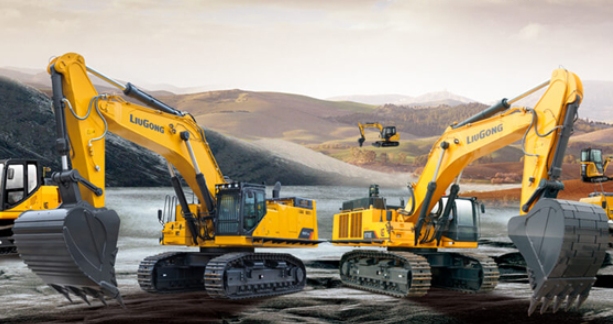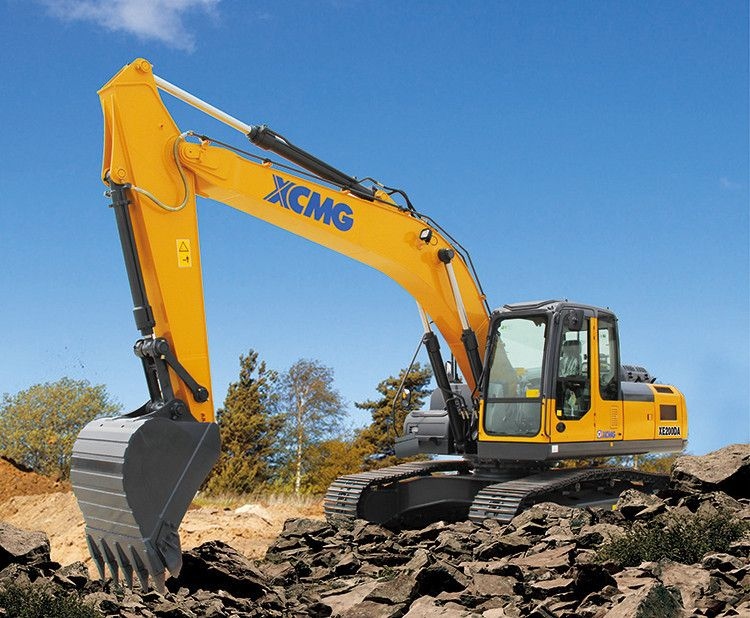How to Pick the Perfect Excavator Size for Your Construction Needs
Industry News
2025/09/18

Ever stood on a job site, scratching your head over which excavator to grab? Picking the right size can make or break your project. Too small, and you’re stuck; too big, and costs climb. Excavators come in all shapes, from tiny diggers to massive movers, each suited for different tasks. This guide walks you through how to choose the right size excavator for your construction needs. Whether you’re leveling ground, digging foundations, or clearing land, we’ve got you covered. Stick around. You’ll walk away with clear picks to boost your work.
Excavators are the backbone of construction. They scoop, lift, and move earth with power. But size matters—wrong choice slows you down or wrecks your budget. We’ll focus on key ranges: micro (under 4 tons), small (4-8 tons), small-medium (8-15 tons), middle (15-25 tons), medium-large (25-35 tons), and large (over 35 tons). Real-world tips and insights here help you shine on site. Let’s get into it.
Why Size Matters in Excavator Selection
Think about your last project. Did the machine fit the space? Handle the load? Size isn’t just about power—it’s about fit. A tiny digger won’t tackle a highway cut. A giant one might crush a backyard job. Getting it right saves time, cuts costs, and keeps safety tight.
The right excavator lifts your game. It matches your crew’s skills, suits the ground, and hits deadlines. Wrong pick? Delays pile up. Your rep takes a hit. For builders or site managers, this choice builds trust. Nail it, and clients notice. We’ve seen crews turn jobs around with the perfect match.
Key Factors to Guide Your Choice
Before grabbing an excavator, size up your job. A few basics steer the decision. Let’s break it down.
Job Scope and Load Capacity
What’s the heaviest load? Micro excavators (under 4 tons) handle light dirt or small trenches. Small ones (4-8 tons) take on bigger piles. Small-medium (8-15 tons) manage mid-sized digs. Middle (15-25 tons) and medium-large (25-35 tons) tackle heavy hauls. Large (over 35 tons) moves mountains.
Check your max weight. Add a buffer—safety first. A 10-ton job? Go 12-15 tons to avoid strain. Users say this prevents breakdowns.
Site Conditions and Space
Where’s the work? Tight urban lots need micro or small sizes. Open fields suit middle or larger ones. Ground type counts too. Muddy spots favor tracked models; hard surfaces work with wheels.
Space shapes your pick. Low ceilings? Stick to micro. Wide areas? Large ones shine. One crew boss noted tight sites doubled their speed with the right small digger.
Lift Height and Reach
How high or far do you need to dig? Micro units reach 8-10 feet. Small ones stretch to 12-15 feet. Middle and up hit 20 feet or more. Foundations need height; trenching needs reach.
Measure your target. A 15-foot wall? Middle size fits. Users swear by matching reach to save trips.
Frequency and Duration
Daily use or one-off? Heavy, long runs need durable middle or large sizes. Short jobs? Micro or small ones do fine. Wear and tear adds up—pick for the long haul.
One site manager cut costs sticking to small units for quick tasks. Plan smart.
- Quick Checks:
- Weigh your loads.
- Map the site.
- Note height needs.
- Track job length.
Excavator Size Breakdown for Your Construction Needs
Here’s the lineup—six size ranges, each with a job fit. We’ve scored them on power, space, and ease based on site feedback.
| Size Range | Weight (Tons) | Best For | Power Score (out of 10) | Space Fit (out of 10) | Ease Score (out of 10) |
| Micro Excavator | Under 4 | Backyards, tight indoor spots | 6 | 9 | 8 |
| Small Excavator | 4-8 | Small lots, light grading | 7 | 8 | 7 |
| Small-Medium | 8-15 | Medium digs, landscaping | 8 | 7 | 6 |
| Middle Excavator | 15-25 | Roads, foundations | 9 | 6 | 5 |
| Medium-Large | 25-35 | Heavy earthwork, big sites | 10 | 5 | 4 |
| Large Excavator | Over 35 | Mining, major demolition | 10 | 4 | 3 |
Micro Excavator (Under 4 Tons)
Perfect for tight spots—backyards or indoor fixes. They weigh less than 4 tons, easy to haul on small trucks. Great for trenching or light clearing. Power’s limited, but they slip where big machines can’t. Ideal if you’re new or working solo.
Small Excavator (4-8 Tons)
Step up to 4-8 tons, and you get more muscle. Good for small lots or grading. They handle bigger loads, reach 12 feet. Tracks keep them steady on soft ground. Crews love them for quick jobs without the bulk.
Small-Medium Excavator (8-15 Tons)
At 8-15 tons, these dig deeper. Landscaping or medium foundations fit here. They offer solid reach, up to 15 feet. Tracks or wheels give options. Site pros say they balance power and maneuverability well.
Middle Excavator (15-25 Tons)
From 15-25 tons, you’re in roadwork or foundation territory. They lift heavy, reach 20 feet. Tracks handle rough terrain. Operators praise their strength for big cuts. But they need space to move.
Medium-Large Excavator (25-35 Tons)
At 25-35 tons, these tackle earthwork or large sites. They dig deep, lift big. Reach hits 20-25 feet. Tracks shine on uneven ground. Workers note they shine on long, tough projects.
Large Excavator (Over 35 Tons)
Over 35 tons, you’re in mining or demolition mode. They move massive loads, reach beyond 25 feet. Tracks grip hard surfaces. Best for pros on huge jobs. Space and skill are musts.
Practical Tips for Making the Right Choice
Ready to pick? Start with a site walk. Note tight spots, load weights, and heights. Test a few sizes if you can—feel the cab, check the reach. Budget-wise, rent first for odd jobs.
Maintenance keeps them running. Check tracks or tires daily. Grease joints. Store dry to avoid rust. One foreman cut downtime 20% with regular care.
Train your team. Safe handling avoids mishaps. Share tips from the field—others learn from you. Your rep grows as the guy who knows gear.
- On-Site Tips:
- Walk the area first.
- Test before buying.
- Keep a maintenance log.
- Train everyone.
Spotlight on MachPlaza: Your Trusted Excavator Supplier

Before wrapping up, let’s shine a light on a solid supplier. MachPlaza leads as an exporter of Chinese construction gear, including excavators for all sizes. Based in hubs like Shanghai and Xuzhou, their team offers quality machines tailored to your needs—micro to large. With a focus on timely delivery and fair prices, they back it with parts support. Their global network makes them a go-to for reliable gear. If you’re hunting for the right excavator, they’re worth a call.
Conclusion
So, how do you choose the right size excavator for your construction needs? It’s about matching weight, site, and task to the perfect range—micro for tight spots, large for heavy digs. Get it right, and your project hums along. Your skills and rep grow with every smart pick. Give it a shot—your next job could be your best yet.
FAQs
How do I choose the right size excavator for a small backyard job?
Go for a micro excavator under 4 tons. It fits tight spaces, handles light digging, and hauls easy.
What should I consider to choose the right size excavator for a road project?
Look at a middle excavator (15-25 tons). It offers power and reach for grading and foundations on open ground.
Can a small excavator (4-8 tons) handle my medium construction needs?
Yes, it works for small lots or light grading. But for bigger loads, step up to 8-15 tons for better strength.
How do I choose the right size excavator for a large mining site?
Pick a large excavator over 35 tons. It moves heavy loads and digs deep, perfect for tough terrain.
Why is it important to choose the right size excavator for my construction needs?
The right size saves time, cuts costs, and keeps safety solid. Wrong pick slows you down or breaks the bank.
